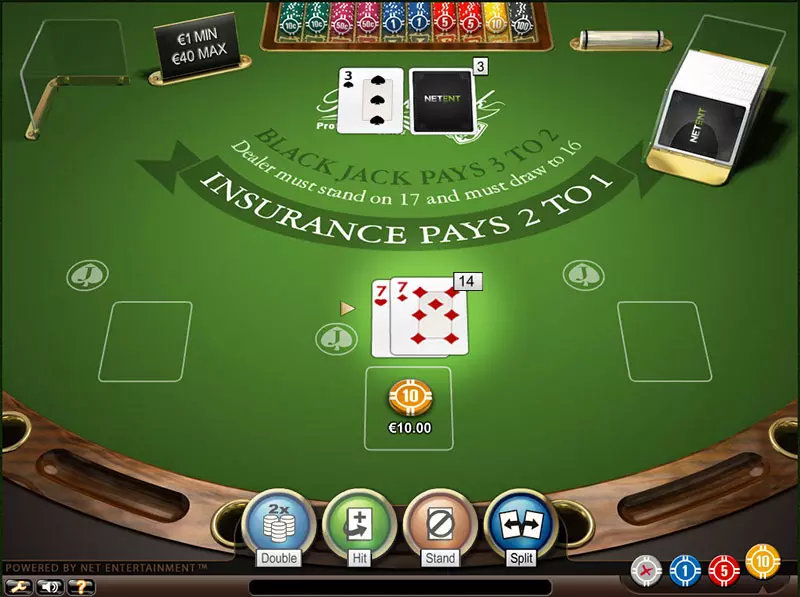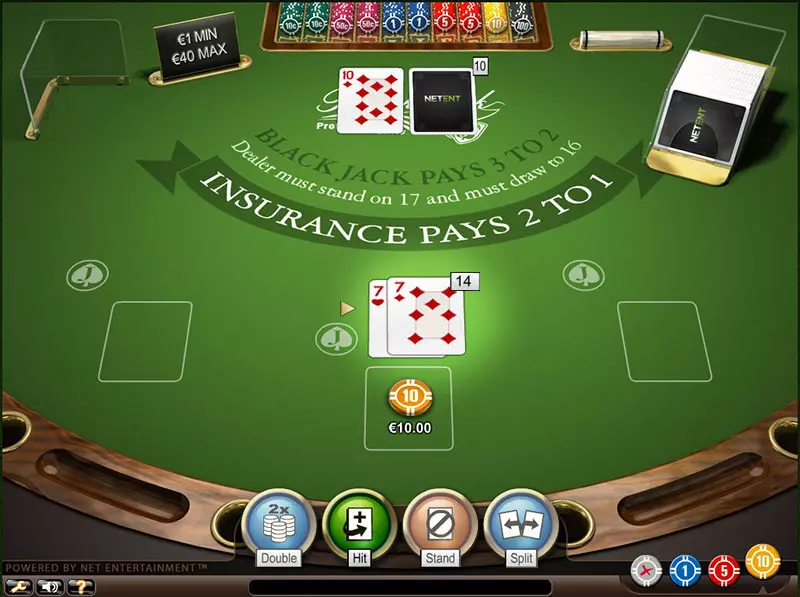The reason why many players fail to achieve the desired success at the blackjack tables is that they lack important knowledge of the game, including basic strategy and rules. Blackjack is a casino game that gives players the opportunity to gain an advantage by using their skills and acquired knowledge. They also need to be disciplined to be able to manage their money successfully. One of the most important things players need to be familiar with is how to play every single hand in the best possible way.
It is true that there always will be heated discussions regarding many of the possible moves in particular situations as sometimes it can be very hard to decide which play is the best. However, in many cases, some moves have proven to be the most beneficial ones as they put players in a favourable position. It is worth remembering them because every time there is a chance to turn the tables in their favour, gamblers should take full advantage.
Splitting pairs can be very tricky as the cases in which players turn a decent hand into two losing ones are not rarity. They need to be extra careful when having two cards of the same rank as their first cards because such situations can turn out to be a nuisance. The only way they can tackle them is to be prepared in advance and remember what their best choice is. One of the card combinations players will get at some point will be a pair of 7’s. In this chapter, we will have a closer look at such cases and the best possible moves for them.
The only way they can tackle them is to prepare in advance and remember what their best choice is. One of the card combinations players will get at some point will be a pair of 7s. In this chapter, we will have a closer look at such cases and the best possible moves for them.
When Players Should Split a Pair of 7s
Before we proceed any further, we would like to specify that players who hold a pair of 7s are facing four possible playing decisions, namely splitting, hitting, surrendering, or standing. The optimal approach towards this pair is impacted by the value of the dealer’s exposed card as well as by house rules such as deck number, the dealer’s standing total, and whether doubling following a split (DAS) and late surrender (LS) are in place.
Splitting 7s serves a multi-fold purpose. It minimises the damage to your bankroll in disadvantageous situations, improves your win rates in advantageous ones, and boosts your odds of turning a poor total of hard 14 into two better hands.
Having a pair of 7s is pretty much the same as having a pair of 6s except for the times when the upcard of the dealer is a 7 as then the best move for players is different. The reason why is that when the dealer has a 7 as their upcard, their position is considered to be a weak one. In this case, it is best for players to split. If they do so and get one card on each hand, the odds are that both hands will be better than the dealer’s upcard.

Moreover, the chances that players will tie with the dealer are also quite high, which is better than busting after all. Players should view this situation as an opportunity to split one losing hand into two separate ones with a chance of improving them.
Additionally, the rest of the cases when they should split such a pair are when the dealer’s upcard is from 2 through 7 in multiple-deck blackjack. The motive behind this move is that having a total of hard 14 in their hand is a situation where one hit is enough to make them surpass 21 and lose automatically.
When players have such a breaking hand, splitting might help them avoid going bust. This is because starting two individual hands with a total of 7 is better than playing a single one with a total of hard 14. It is also worth mentioning that splitting gives players the golden opportunity to double down while the dealer’s in a weak position, especially if they draw a 3 or a 4 on any of the split hands or even better – on both.
As for single-deck blackjack, splitting 7s is recommended when the dealer’s face-up card has a value of 2 through 8 only. However, the 7s should be split against the 8 only on condition the house rules allow for doubling down after pair splitting.
If not, you choose the next best decision, which is to hit the 7s versus the 8. Double-deck players must also split 7s against the dealer’s 2 through 8 if DAS is applicable at the respective table as shown in the following chart.
| 7-7 Basic Strategy for Double-Deck Blackjack Games with DAS | ||||||||||
|---|---|---|---|---|---|---|---|---|---|---|
| Players’ Hand | Dealer’s Upcard | |||||||||
| 2 | 3 | 4 | 5 | 6 | 7 | 8 | 9 | 10 | Ace | |
| 7-7 | P | P | P | P | P | P | Ph | H | H | H |
When Players Should Hit a Pair of 7s
The best possible moves are based on the dealer’s upcard and players’ hand total.. In this sense, it is always best to observe particular situations and compare them in order to understand how a certain strategy works. There are cases when it is most beneficial for players to decide not to split but choose another move instead. Most of the time, this kind of strategy is applied whenever the dealer has a powerful card as it is too risky to compete against it by posting another bet.
Whenever players have a pair of 7s in their hand and the dealer’s upcard is from 8 through ace, it is best to hit in variations that utilise four to eight decks. This is because facing a powerful upcard of the dealer is a challenge on its own and there is no reason to make the matters worse by splitting their hand. The odds are in favour of hitting since this minimises players’ long-term losses. The chances that they will get two hands that are strong enough to beat any of these cards are rather small.
Single-deck blackjack players must hit their 7s when the dealer holds 9 or an ace and stand against ten-value cards provided that late surrender is impossible. Players who engage in blackjack variants with DAS that play with two full decks are recommended to hit against the dealer’s 9, 10, and aces. Under NDAS, hitting your 7s is also advisable when the dealer has an 8 in double-deck games. The drawing rules for the dealer do not influence one’s playing decisions for paired 7s.

An Alternative Move
Another way players can tackle the situations when they have a pair of 7s in their hand is by choosing to surrender. Many professional gamblers share the opinion that if their hand totals 14, it is best to use this move.
When players surrender they give the casino half of their bet and the rest they keep to themselves. In situations when they have breaking hands and the chances they will go bust are very high, this is a great opportunity as it allows them to get some of their money back that otherwise they would have lost.
However, this is the reason why many casinos deprive blackjack players from this option. Thus, they need to bear in mind that before sitting at a table, they should check the rules of the respective game and whether the surrender option is restricted. Also, it is worth mentioning that if players decide to take advantage of it, this should be their first move, otherwise, they won’t be allowed to choose this alternative.
It is of utmost importance to point out that surrendering your 7s is a viable playing decision only in single-deck blackjack games. Whether your dealer must draw on soft 17 or stand also influences your plays. Provided that the dealer must stand on soft 17, you should surrender your pair of 7s against their ten-value card.
However, if the dealer must hit this soft total, your best playing decision is to surrender this pair both versus their 10 and ace. You hit against the 9 and split against all other upcards if you play with DAS.
| 7-7 Basic Strategy for Single-Deck H17 Blackjack with DAS | ||||||||||
|---|---|---|---|---|---|---|---|---|---|---|
| Players’ Hand | Dealer’s Upcard | |||||||||
| 2 | 3 | 4 | 5 | 6 | 7 | 8 | 9 | 10 | Ace | |
| 7-7 | P | P | P | P | P | P | Ph | H | Rs | Rh |
| 7-7 Basic Strategy for Single-Deck S17 Blackjack with DAS | ||||||||||
|---|---|---|---|---|---|---|---|---|---|---|
| Players’ Hand | Dealer’s Upcard | |||||||||
| 2 | 3 | 4 | 5 | 6 | 7 | 8 | 9 | 10 | Ace | |
| 7-7 | P | P | P | P | P | P | Ph | H | Rs | H |
Splitting a Pair of 2’s or 3’s
Splitting a Pair of 4’s
Splitting a Pair of 5’s
Splitting a Pair of 6’s
Splitting a Pair of 7’s
Conclusion
It is essential for players to know how to deal with cases when they have a pair of 7’s in their hand. They need to bear in mind that such a breaking hand places them in an unfavourable situation and if they want to choose the move that will lead to the least amount of money losses, preparation beforehand is a must. Splitting pairs can be very tricky as it can either result in two winning hands or two losing ones.
If players want to avoid putting themselves in troublesome situations unintentionally, they can have a look at all of the developed strategies which show how it’s best to proceed in such cases. It is also really important that they understand the reason behind every move as this will help them make the most of every situation. If gamblers have the needed knowledge, it gives them a huge advantage and it prevents them from losing significant amount of money.
| 7-7 Basic Strategy for Multiple-Deck H17/S17 Blackjack | ||||||||||
|---|---|---|---|---|---|---|---|---|---|---|
| Players’ Hand | Dealer’s Upcard | |||||||||
| 2 | 3 | 4 | 5 | 6 | 7 | 8 | 9 | 10 | Ace | |
| 7-7 | P | P | P | P | P | P | H | H | H | H |